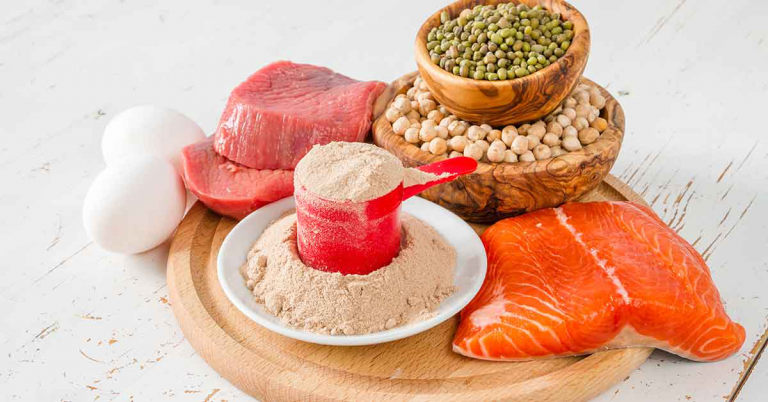![]()
Some fats are good. Some fats are bad. But which fat is which?
Fats are central to your diet now. The debate continues to rage on about which fats are good, and which fats are bad for your health. Attempts to eliminate fat from the diet have generalized all fats, which has robbed people of the healthy fats.
But some fats are considered good, while others are considered bad for your health. Trans fats are considered bad for you. Monosaturated fats and polyunsaturated fats are considered healthy options. Saturated fats are neither good nor bad for your health.
For the best health result, it is advisable to replace bad fats and in between fats with good fats. They will increase your body’s metabolic functions and help provide a healthy source of energy. However, it is recommended to limit your intake of good fats as well, as they can be a major source of uncontrolled calorie intake. You may not be aware of the amount of calories you consume because of the high calorie content in fat.
The difference between ideal and non-ideal fats is often blurry. It is difficult to tell the different types of fat apart. How would you be able to keep eating healthy fats while purging the bad fats from your diet?
Bad fats

Trans fats are the worst types of fat in your diet. They are dangerous, and can increase the likelihood of contracting various medical conditions.
Trans fats are made by hydrogenation, which turns healthy liquid oils into solids in order to preserve them for a longer amount of time. Trans fats can be found in vegetable shortening and margarines, but have generally found their way into industrial use for commercial products such as cookies and hotel made foods, such as French fries.
Eating these foods will increase the likelihood of the body picking up dangerous LDL cholesterol, which could find its way into the blood stream and replace the good cholesterol. Trans fats have been linked with an increase in diabetes, as a result of increased resistance to insulin.
Trans fats are so harmful that eating even a small amount of trans fats increases the risk of getting heart diseases by nearly 25%.
Trans fats do not have any positive health effects, or a safe amount to consume. Many countries have actively banned trans fats because of their increased health risk.
In-between fats

These fats do not have any negative effects. However, they have been proven to be lacking in benefit as well. They are usually solid at room temperature, and are a major component of the diet.
In between saturated fats, such as bacon grease, are solid fats derived from red meat, whole milk, coconut oil and cheese. They are popular with commercially baked goods.
Saturated fats are not unhealthy when consumed in decent amounts. However, when consumed in large amounts, they can increase the level of cholesterol in the body similarly to bad fats. This may lead to blockage of the arteries and other vital body organs.
The difference between bad fats and in between fats is tangible. Only small amounts of bad fats are required to be lethal to the body. There is no safe level of consumption. On the other hand, in between fats are not unhealthy in small amounts. They have recommended levels of consumption that will not be harmful to your body. On the other hand, good fats are not harmful in any amount. Integrating them into your diet may even help your circulation, as well as improve the health of your heart.
It is recommended that these fats do not make up more than 10% of your total calorie intake.
Good fats

Some fats may be good for your health. These good fats come from vegetables, nuts, fish, seeds, and fruits such as avocadoes. They are liquid at room temperature. Some good sources of these fats are canola oil, avocado oil, sunflower oil and high-oleic-safflower oil.
Good fats have been proven to be a healthy option through observing many dietary styles that make use of them. The effects of good fats have been observed in the Mediterranean region, which has reduced heart attack rates despite the oil-rich diets. They are necessary in your body functions and for cell composition.
Replacing bad fats and in between fats with good fats may increase your health significantly Good fats will reduce your risk of dementia, reduce likelihood of heart diseases and help with weight loss.
The best sources of good fat are avocadoes, walnuts and other fatty nuts, seed and nut butter, olives, ground flaxseed, salmon, tofu, chia seeds, eggs, lean beef, whole milk, whole milk yoghurt and parmesan cheese.
Final thought
Bad fat can be bad for your health. They may increase your risk of getting diabetes and having weight problems. Bad fats can clog your arteries and line up your organs. It may cause you to have difficulty breathing, as well as fat-related diseases such as fatty liver.
Some fat can be good for you. It may even be necessary for growth and development. Fat is one of the body’s major energy sources. The body burns fat and converts it into energy, which provides a lasting solution to its energy needs. Fat also helps the body absorb certain vitamins and minerals.
Fat is also important in the composition of the cell. It is necessary to make cell membranes. It is also a major component of the cell’s exterior and the nerve endings. Fat helps blood vessels to clot, which prevents excessive loss of blood in case of an accident. It also helps to enhance muscle movement.
Fat may prove as addictive as other substances and activities that attract addictive tendencies. Fatty foods may prove to be delicious, which release the same feel-good enzymes as drugs and substances do. Visit The Recovery Village to understand how addiction works, as well as symptoms of addiction, in order to find out if you may have a fat problem.

